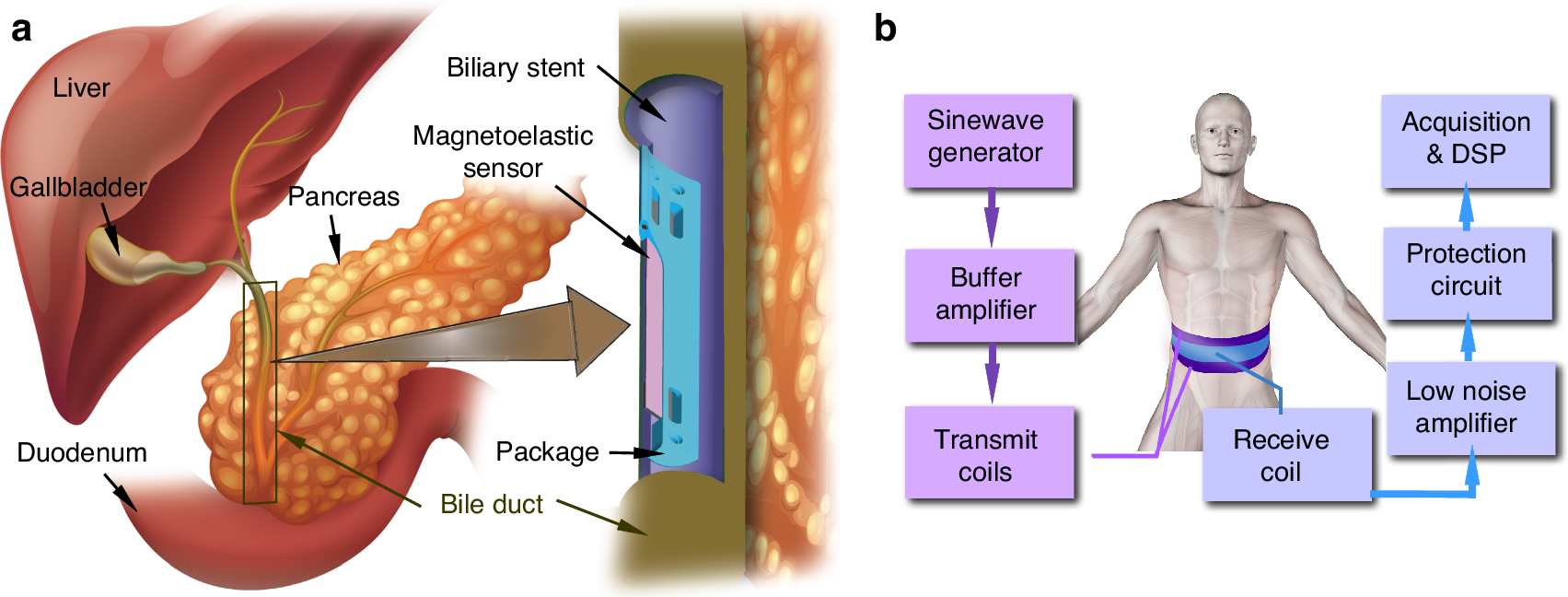2024-10-31 ミシガン大学
<関連情報>
- https://news.umich.edu/cancer-management-stent-sensor-can-warn-of-blockages-in-the-bile-duct/
- https://www.nature.com/articles/s41378-024-00772-8
磁気弾性センサーを用いたプラスチック製胆道ステントの生体内無線モニタリング用マイクロシステム A microsystem for in vivo wireless monitoring of plastic biliary stents using magnetoelastic sensors
Ramprasad M. Nambisan,Scott R. Green,Richard S. Kwon,Grace H. Elta & Yogesh B. Gianchandani
Microsystems & Nanoengineering Published:31 October 2024
DOI:https://doi.org/10.1038/s41378-024-00772-8

Abstract
With an interest in monitoring the patency of stents that are used to treat strictures in the bile duct, this paper reports the investigation of a wireless sensing system to interrogate a microsensor integrated into the stent. The microsensor is comprised of a 28-μm-thick magnetoelastic foil with 8.25-mm length and 1-mm width. Magnetic biasing is provided by permanent magnets attached to the foil. These elements are incorporated into a customized 3D polymeric package. The system electromagnetically excites the magnetoelastic resonant sensor and measures the resulting signal. Through shifts in resonant frequency and quality factor, the sensor is intended to provide an early indication of sludge accumulation in the stent. This work focuses on challenges associated with sensor miniaturization and placement, wireless range, drive signal feedthrough, and clinical use. A swine specimen in vivo experiment is described. Following endoscopic implantation of the sensor enabled plastic stent into the bile duct, at a range of approximately 17 cm, the signal-to-noise ratio of ~106 was observed with an interrogation time of 336 s. These are the first reported signals from a passive wireless magnetoelastic sensor implanted in a live animal.


